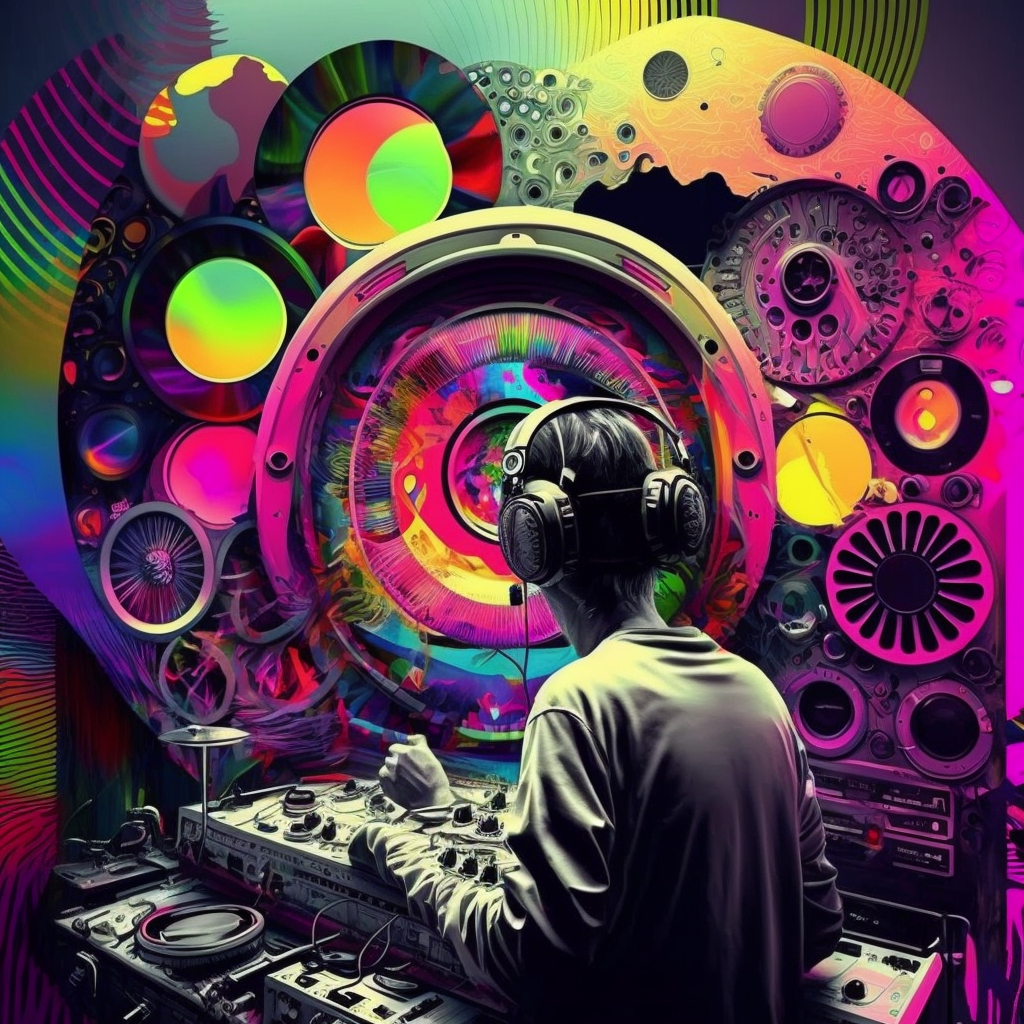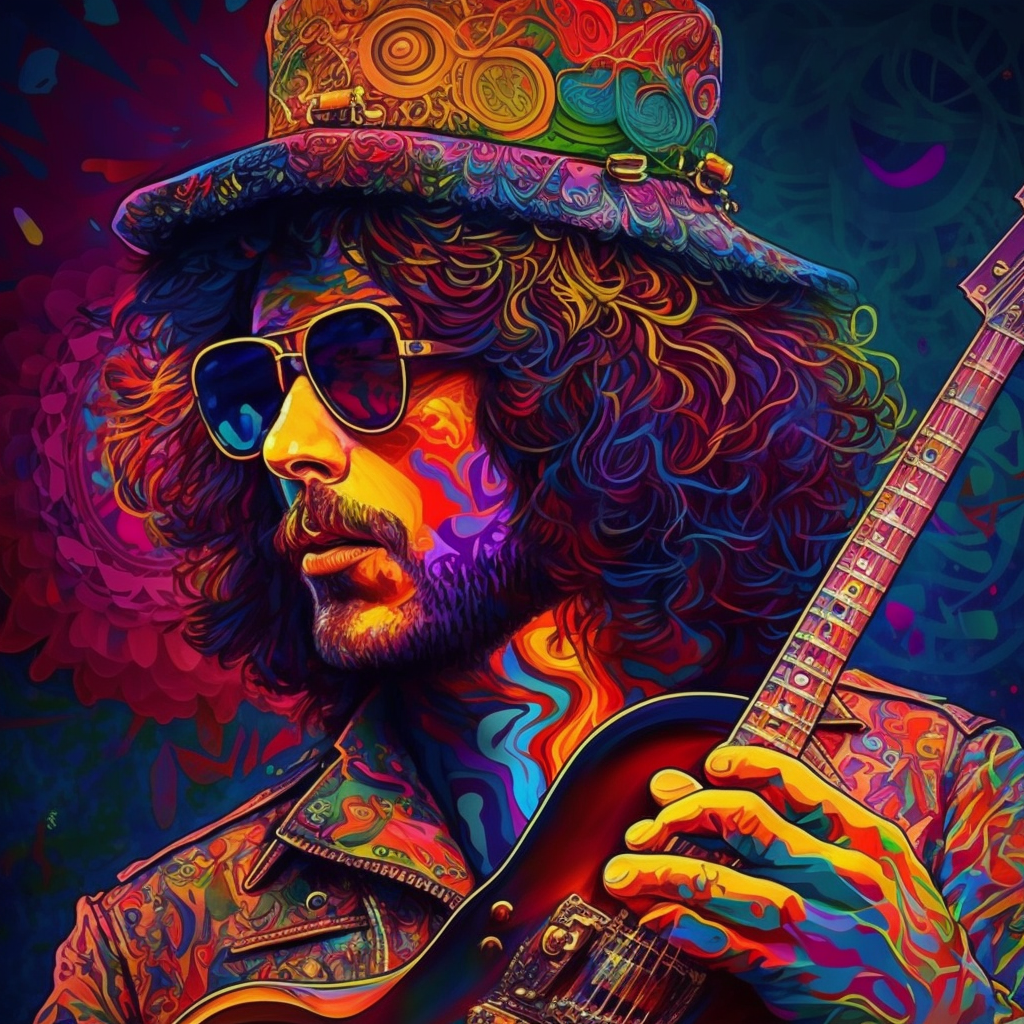
 Get To Know The Mysterious Facts About Psychedelic Rock Genre
Get To Know The Mysterious Facts About Psychedelic Rock Genre
Introduction to Psychedelic Rock Music Genre
“Ah, Psychedelic Rock – the music that dared to go where no other genre had gone before. It was a sound that captivated the hearts and minds of a generation, igniting a cultural revolution that changed the world forever. But where did this music come from, and what makes it so special?
To understand the origins of Psychedelic Rock, we must first take a trip back to the 1960s. This was a time of great social upheaval, with young people rebelling against the conformity and materialism of the post-war era. It was a time of political activism, civil rights movements, and anti-war protests. And it was against this backdrop that a new kind of music began to emerge.
Psychedelic Rock was a genre that embraced the use of mind-altering drugs and explored new realms of consciousness. It was a music that celebrated the power of the imagination, and that rejected the conventions of mainstream Rock ‘n’ Roll. In place of simple chord progressions and catchy hooks, Psychedelic Rock featured complex structures, intricate instrumentation, and an emphasis on the use of effects and studio techniques.
One of the key influences on the development of Psychedelic Rock was the counterculture movement of the time. This was a movement that rejected the values of the dominant culture and sought to create a new kind of society based on individual freedom and self-expression. Psychedelic Rock became a symbol of this movement, a music that spoke to the hopes and aspirations of a generation of young people who were looking for something more than the empty promises of consumer culture.
As the 1960s wore on, Psychedelic Rock continued to evolve and expand, with bands like The Beatles, The Rolling Stones, and Pink Floyd pushing the boundaries of what was possible in Rock music. By the end of the decade, Psychedelic Rock had become a mainstream phenomenon, with bands like Jefferson Airplane, The Doors, and Jimi Hendrix ruling the airwaves.
Today, the legacy of Psychedelic Rock can be seen in the countless bands and artists who continue to draw inspiration from this groundbreaking genre. From the dreamy, atmospheric sounds of Tame Impala to the heavy, distorted riffs of King Gizzard and the Lizard Wizard, Psychedelic Rock continues to be a vibrant and influential force in the world of music.
In this article, we’ll take a deep dive into the world of Psychedelic Rock, exploring the history of the genre, its key artists and albums, and the unique characteristics that have made it such a enduring and beloved style of music. So sit back, relax, and let the sounds of Psychedelic Rock transport you to another dimension – a world of imagination, experimentation, and boundless possibility.”
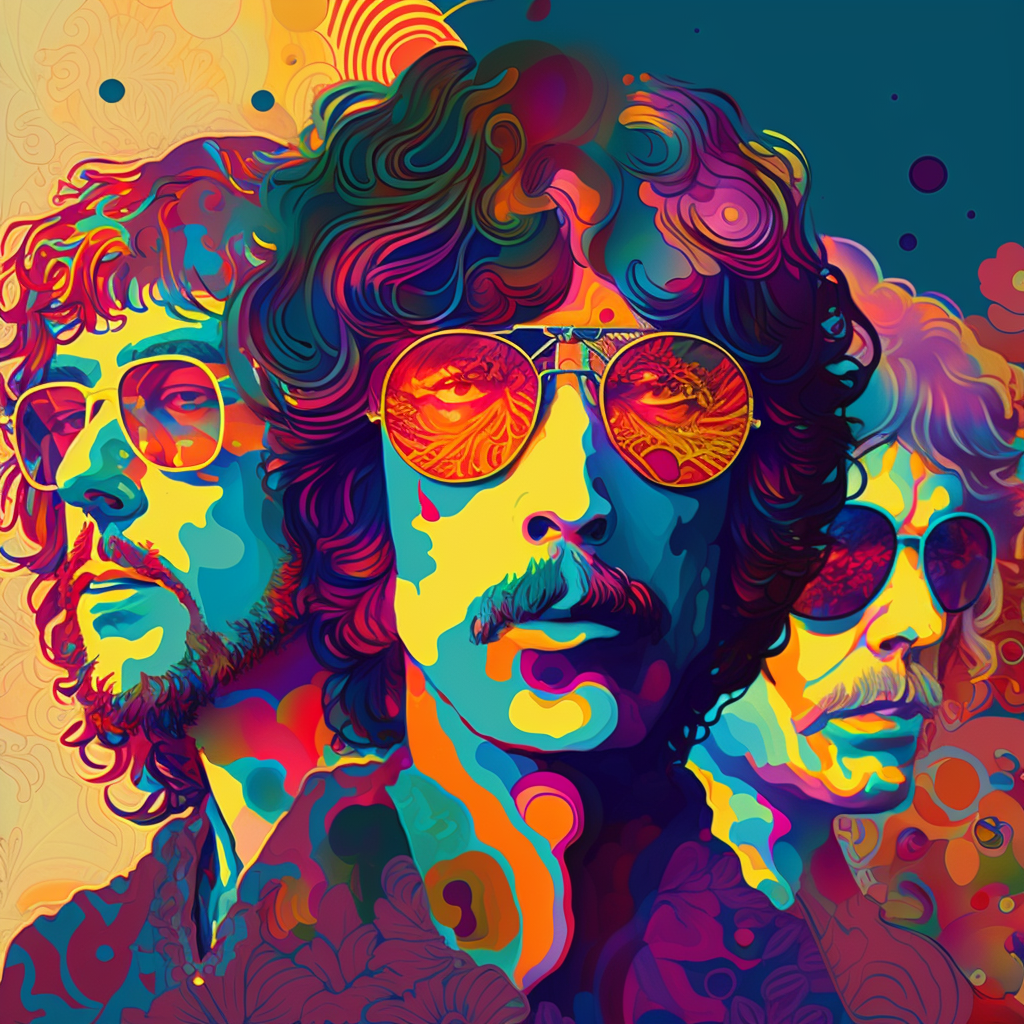
A Quick Overview Of The Psychedelic Rock History
The roots of Psychedelic Rock can be traced back to the early 1960s, when a number of precursors and influences began to emerge. These early developments laid the groundwork for the genre, paving the way for the groundbreaking music that was to come.
One key precursor to Psychedelic Rock was the surf music scene that emerged in Southern California in the early 1960s. Bands like The Beach Boys and The Ventures developed a distinctive sound that was built around the use of reverb and tremolo effects, creating a hypnotic, dreamy atmosphere that was evocative of the ocean and the beach.
Another important influence on the early era of Psychedelic Rock was the work of jazz musicians like John Coltrane and Sun Ra. These artists were known for their explorations of free-form improvisation and their willingness to experiment with new sounds and structures. Their music was characterized by a sense of adventure and a willingness to push boundaries, qualities that would later become defining features of Psychedelic Rock.
The use of psychedelic drugs like LSD also played a significant role in the development of Psychedelic Rock. As more and more young people began to experiment with these mind-altering substances, they found that the music of the time was the perfect accompaniment to their experiences. Bands like The Beatles and The Rolling Stones began to incorporate psychedelic elements into their music, using innovative studio techniques and new instrumentation to create a sound that was unlike anything that had come before.
Other important influences on the early era of Psychedelic Rock included the folk revival of the early 1960s, which emphasized social and political themes, as well as the emerging counterculture movement, which rejected the values of mainstream society in favor of individualism, creativity, and experimentation.
Taken together, these precursors and influences created a fertile environment for the development of Psychedelic Rock. They laid the groundwork for a new kind of music that would push the boundaries of what was possible in popular music, exploring new sounds, structures, and themes in a way that would forever change the musical landscape.
1965 And Moving Forward: Formation Of Sound
By 1965, the early era of Psychedelic Rock had given way to a new phase in the genre’s development. This was a time of experimentation and innovation, as musicians began to push the boundaries of what was possible in popular music.
One of the key developments in this period was the emergence of distinct psychedelic scenes in different parts of the world. San Francisco was one of the most important of these scenes, with bands like The Grateful Dead, Jefferson Airplane, and Big Brother and the Holding Company creating a sound that was rooted in the improvisational spirit of jazz and the experimentation of the avant-garde.
In Britain, the so-called “British Invasion” was in full swing, with bands like The Beatles, The Rolling Stones, and The Kinks incorporating psychedelic elements into their music. Their music was characterized by a sense of whimsy and playfulness, with colorful lyrics, innovative studio effects, and a willingness to experiment with new sounds.
Meanwhile, in other parts of the world, psychedelic music was also beginning to emerge. In Australia, for example, bands like The Easybeats and The Master’s Apprentices were creating music that blended psychedelic rock with elements of blues and R&B.
At the same time, the sounds of Psychedelic Rock were beginning to take shape. One of the defining features of this music was the use of new and innovative instrumentation, such as the electric sitar, the mellotron, and the wah-wah pedal. Musicians were also experimenting with new studio techniques, such as backward masking, tape loops, and phasing.
Lyrically, Psychedelic Rock was characterized by a sense of mysticism and introspection. Many songs explored themes of personal and spiritual transformation, often inspired by the use of psychedelic drugs.
Taken together, the formative psychedelic scenes and sounds of 1965 set the stage for a new phase in the development of Psychedelic Rock. They demonstrated the genre’s potential for innovation and experimentation, and showed that there was an audience hungry for music that pushed the boundaries of what was possible.
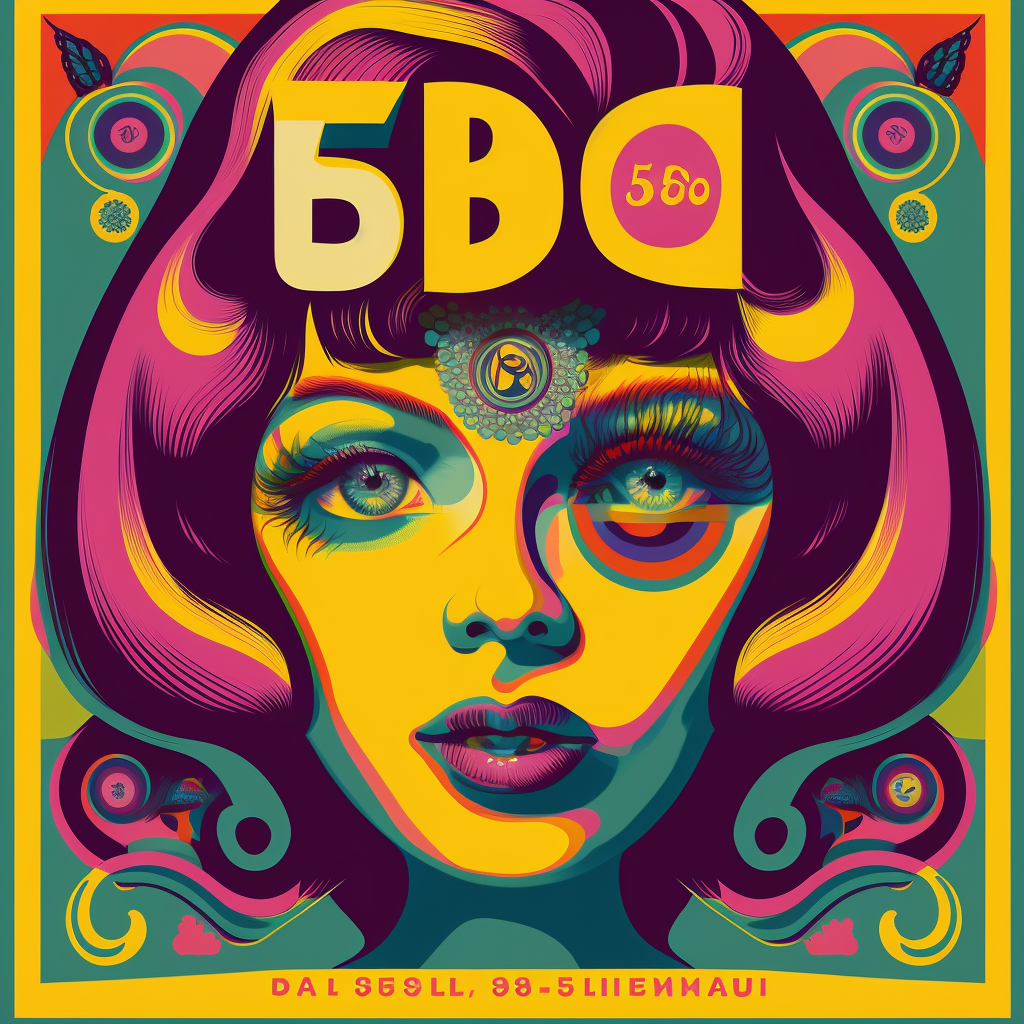
Key Events Of The Time
Events like the Monterey Pop Festival and Woodstock had a tremendous impact on the development of Psychedelic Rock. These festivals were more than just music events, they were cultural touchstones that brought together young people who were looking for something new and exciting. At Monterey, I had the chance to share the stage with some of the greatest musicians of the time, like Otis Redding, The Who, and The Mamas and the Papas. It was a thrilling experience, and it helped to establish Psychedelic Rock as a legitimate and powerful musical genre.
At Woodstock, the performance of “The Star-Spangled Banner” was a defining moment in the festival and in the genre as a whole. Jimi Hendrix used feedback and distortion to create a soundscape of war and chaos, making a powerful statement about the violence and upheaval of the era. The performance was a cathartic moment for many in the audience, and it helped to solidify the countercultural ethos of the Psychedelic Rock movement.
Some of the most influential Psychedelic Rock bands of the time were also present at these festivals, including The Who, Janis Joplin, and Jefferson Airplane. These bands, along with many others, helped to define the sound and style of the genre. The Who’s explosive live performances and innovative use of guitar feedback and distortion, for example, influenced many other bands in the genre. Janis Joplin’s powerful vocals and emotive lyrics helped to redefine the role of women in rock music, while Jefferson Airplane’s trippy, surreal soundscapes and political lyrics helped to push the boundaries of what was possible in popular music.
The impact of festivals like Monterey and Woodstock on the Psychedelic Rock genre was immense. These events brought together a community of like-minded individuals who were searching for new forms of expression, and they provided a platform for some of the most innovative and influential musicians of the time. The music, the culture, and the countercultural spirit that were born out of these festivals continue to resonate today, inspiring new generations of musicians and fans.
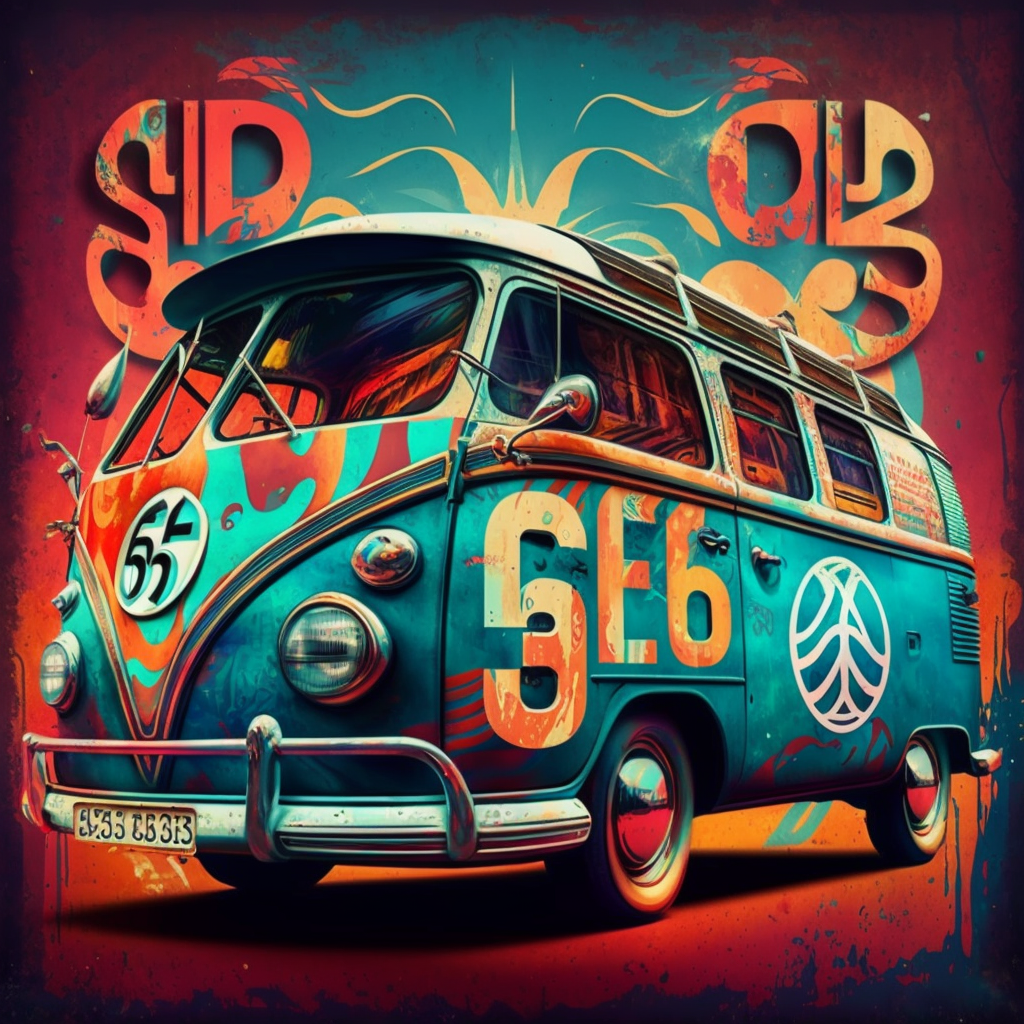
23 Of The Most Important Psychedelic Rock Artists
The Beatles – The Beatles were a hugely influential band in the Psychedelic Rock movement. They experimented with new sounds and techniques on albums like “Revolver” and “Sgt. Pepper’s Lonely Hearts Club Band,” which incorporated Indian music, orchestral arrangements, and unconventional song structures. Their use of studio effects, like tape loops and reverse tape effects, helped to establish the psychedelic sound.
Pink Floyd – Pink Floyd’s sound was characterized by atmospheric, spacey soundscapes and introspective lyrics. They experimented with long, extended pieces that incorporated elements of progressive rock, jazz, and electronic music. Their album “The Dark Side of the Moon” is considered a landmark in the genre.
The Jimi Hendrix Experience – Jimi Hendrix was a guitar virtuoso whose innovative use of feedback, distortion, and wah-wah effects helped to redefine the sound of rock guitar. His music was marked by its raw, bluesy feel and psychedelic overtones. He was known for his energetic live performances and his ability to push the boundaries of what was possible on the guitar.
The Doors – The Doors were known for their dark, brooding sound and their enigmatic lyrics. They drew on influences from blues, jazz, and Eastern music, and their music often incorporated extended instrumental passages and free-form improvisation. Their self-titled debut album, which featured hits like “Light My Fire” and “Break on Through,” helped to establish them as one of the most important bands in the genre.
Jefferson Airplane – Jefferson Airplane’s music was marked by its political themes and its trippy, surreal soundscapes. They were one of the first bands to feature a female lead vocalist, Grace Slick, whose powerful vocals and emotive lyrics helped to redefine the role of women in rock music. Their album “Surrealistic Pillow,” which featured hits like “Somebody to Love” and “White Rabbit,” is considered a classic of the genre.
Grateful Dead – The Grateful Dead’s music was characterized by its improvisational style and its use of extended jams and free-form instrumental passages. They drew on influences from blues, folk, and jazz, and their music often featured intricate, interlocking guitar and keyboard lines. Their live performances were legendary, and they were known for their devoted fan base and their commitment to the countercultural ethos.
Cream – Cream’s music was marked by its heavy, bluesy sound and its virtuosic instrumental playing. They were one of the first power trios, featuring Eric Clapton on guitar, Jack Bruce on bass, and Ginger Baker on drums. They drew on influences from blues, jazz, and psychedelia, and their music often featured extended instrumental solos and improvisation.
The Byrds – The Byrds were known for their jangly, folk-influenced sound and their intricate vocal harmonies. They helped to popularize the use of 12-string electric guitars in rock music, and their music often featured socially conscious lyrics and a strong sense of melody. Their albums “Mr. Tambourine Man” and “Younger Than Yesterday” are considered classics of the genre.
The 13th Floor Elevators – The 13th Floor Elevators were one of the first bands to use the term “psychedelic” to describe their music. They were known for their raw, garage-rock sound and their use of distorted guitar and jug-blowing. Their album “The Psychedelic Sounds of the 13th Floor Elevators” is considered a pioneering work in the genre.
The Velvet Underground – The Velvet Underground were known for their dark, avant-garde sound and their confrontational lyrics. They drew on influences from art rock, avant-garde music, and free jazz, and their music often featured experimental instrumentation and unconventional song structures. Their albums “The Velvet Underground and Nico” and “White Light/White Heat” are considered landmark works in the genre.
The Zombies – The Zombies were known for their sophisticated, melodic sound and their intricate vocal arrangements. They drew on influences from R&B, jazz, and classical music, and their music often featured complex chord changes and lush orchestration. Their album “Odessey and Oracle” is considered a classic of the genre.
Captain Beefheart and His Magic Band – Captain Beefheart and His Magic Band were known for their avant-garde, experimental sound and their surreal lyrics. They drew on influences from blues, free jazz, and art rock, and their music often featured complex rhythms and dissonant harmonies. Their album “Trout Mask Replica” is considered a seminal work in the genre.
Syd Barrett – Syd Barrett was the original frontman of Pink Floyd, and his solo work was characterized by its whimsical, childlike sound and its surreal, stream-of-consciousness lyrics. He drew on influences from British folk music, Indian music, and avant-garde art, and his music often featured experimental instrumentation and unconventional song structures. His album “The Madcap Laughs” is considered a classic of the genre.
Frank Zappa – Frank Zappa was known for his irreverent, satirical lyrics and his eclectic, genre-bending sound. He drew on influences from jazz, classical music, and avant-garde art, and his music often featured complex instrumental arrangements and intricate time signatures. His album “Freak Out!” is considered a pioneering work in the genre.
King Crimson – King Crimson’s music was characterized by its virtuosic instrumental playing and its use of complex time signatures and unusual song structures. They drew on influences from jazz, classical music, and avant-garde art, and their music often featured intricate guitar and keyboard lines. Their album “In the Court of the Crimson King” is considered a classic of the genre.
Santana – Santana’s music was characterized by its fusion of rock, Latin, and jazz influences, and its use of long, extended jams and Latin percussion. They were known for their high-energy live performances and their innovative use of guitar and keyboard solos. Their album “Abraxas” is considered a landmark work in the genre.
Love – Formed in Los Angeles in 1965, Love were known for their mix of folk, rock, and psychedelia. Their album “Forever Changes” is considered a classic of the genre, with its complex arrangements and socially conscious lyrics.
The Moody Blues – Formed in Birmingham, England in 1964, The Moody Blues were known for their lush, orchestral sound and philosophical lyrics. Albums like “Days of Future Passed” and “In Search of the Lost Chord” helped define the sound of psychedelic rock.
The Electric Prunes – Formed in Los Angeles in 1965, The Electric Prunes were known for their psychedelic sound and use of electronic effects. Hits like “I Had Too Much to Dream (Last Night)” and “Get Me to the World on Time” helped define the sound of the era.
Vanilla Fudge – Formed in Long Island, New York in 1966, Vanilla Fudge were known for their heavy, bluesy sound and use of Hammond organ. Their cover of “You Keep Me Hangin’ On” became a hit in 1967.
The Seeds – Hailing from Los Angeles, The Seeds were known for their garage rock sound and use of distorted guitar and organ. Hits like “Pushin’ Too Hard” and “Can’t Seem to Make You Mine” helped define the sound of the era.
Iron Butterfly – Formed in San Diego in 1966, Iron Butterfly were pioneers of the heavy psychedelic sound. Their album “In-A-Gadda-Da-Vida” featured the classic title track, a 17-minute-long psychedelic epic.
The Amboy Dukes – Led by guitarist Ted Nugent, The Amboy Dukes were known for their high-energy, riff-heavy sound. Their album “Journey to the Center of the Mind” helped define the sound of late 60s psychedelic rock.
Each of these artists made significant contributions to the Psychedelic Rock genre, helping to push the boundaries of what was possible in popular music. Their unique sounds and styles continue to influence musicians today, making them enduring icons of the genre.
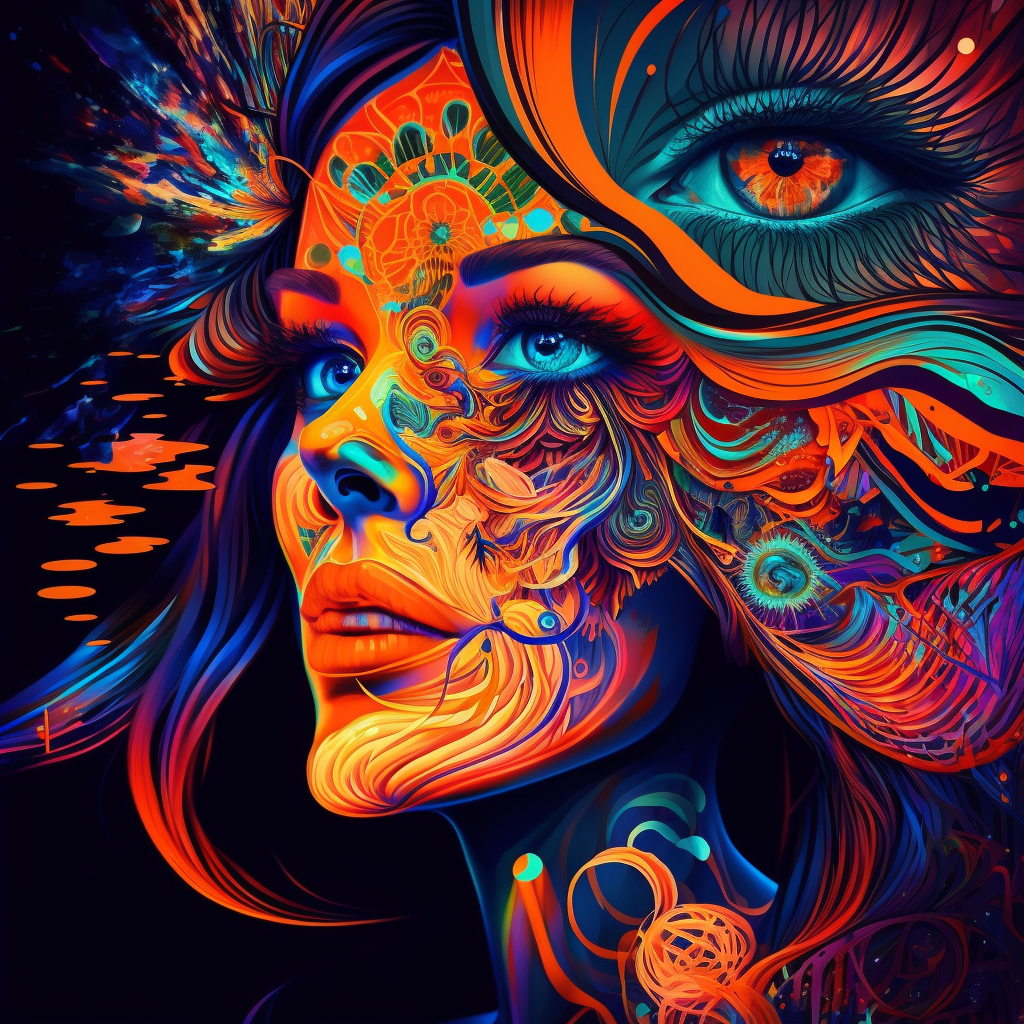
The Legacy
The impact of Psychedelic Rock on popular music has been significant and long-lasting. The genre’s experimentation with sound, instrumentation, and lyrics helped to break down traditional barriers in music and paved the way for new forms of expression.
One way in which Psychedelic Rock influenced other genres is through its impact on progressive rock. Bands like Pink Floyd and Yes drew heavily from Psychedelic Rock’s use of complex arrangements, extended instrumental passages, and philosophical lyrics. Heavy metal also owes a debt to Psychedelic Rock, with bands like Black Sabbath and Led Zeppelin incorporating elements of the genre’s heavy, riff-driven sound.
In more recent years, indie rock, techno and trance has been influenced by Psychedelic Rock’s emphasis on lo-fi production, DIY ethos, and experimentation. Bands like Tame Impala and Animal Collective have incorporated elements of the genre’s sound into their own music.
Beyond music, Psychedelic Rock has had a significant impact on social and cultural movements. The genre’s focus on free expression, individualism, and countercultural ideals helped to inspire the hippie movement and other movements for social and political change. As musician David Crosby once said, “Psychedelic Rock was the sound of the counterculture, the music of the people who were trying to change the world.”
Critics and fans alike have praised the importance of Psychedelic Rock. Music journalist Mark Kemp has said, “Psychedelic Rock was a revolution in sound and consciousness that helped to change the course of popular music.” Musician Brian Wilson of The Beach Boys has described the genre as “a wonderful creative period in music history,” while author and journalist Jon Savage has called it “a moment of possibility and hope.”
In conclusion, Psychedelic Rock’s influence on popular music has been far-reaching and enduring. Its experimentation with sound, instrumentation, and lyrics helped to break down traditional barriers in music and paved the way for new forms of expression. The genre’s impact on other genres such as progressive rock, heavy metal, and indie rock is clear, and its influence on social and cultural movements beyond music cannot be overstated. As musician Grace Slick of Jefferson Airplane once said, “Psychedelic Rock was the soundtrack to a revolution, and it changed everything.”
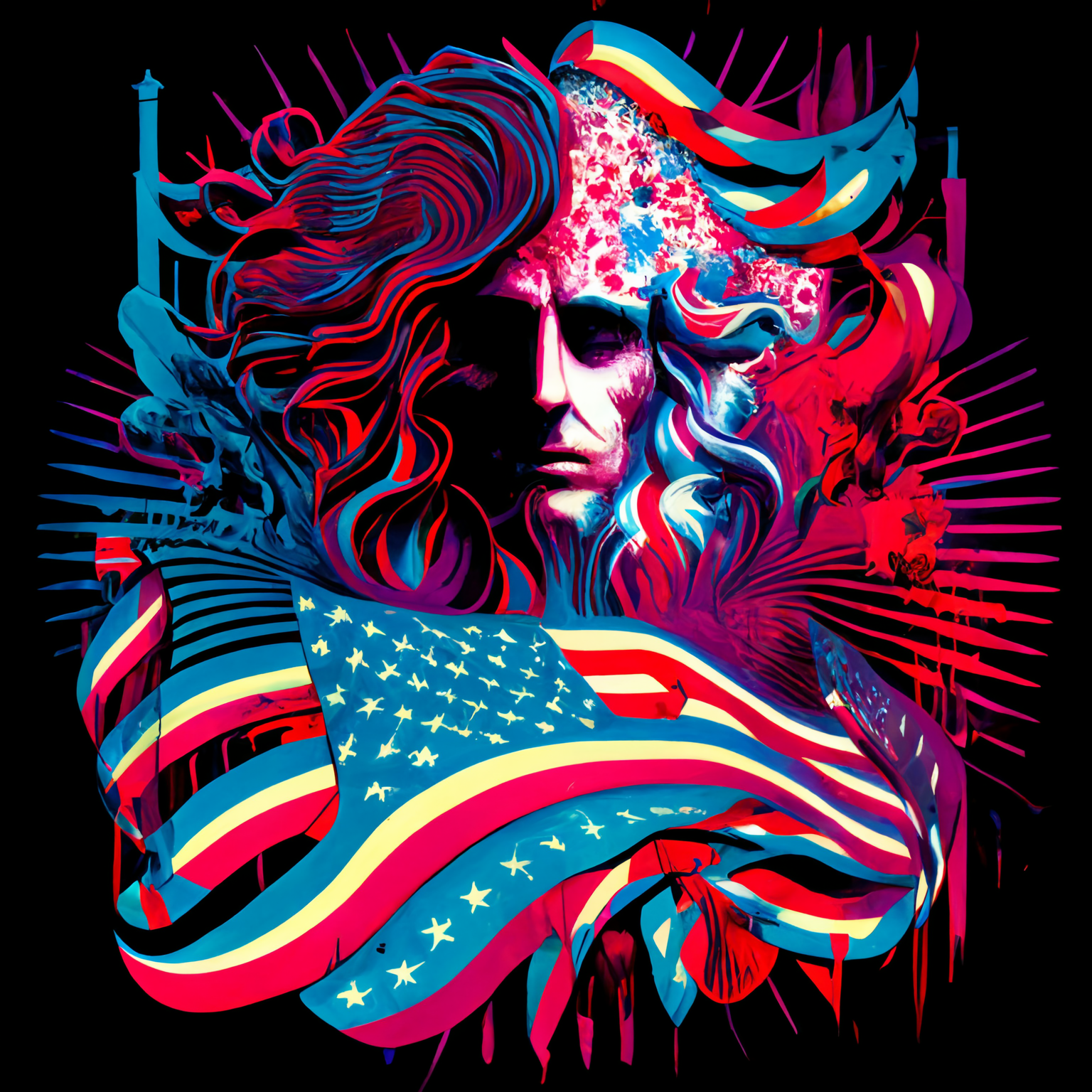
International Variants Of American And British Psychedelic Rock Bands Around The Globe
Psychedelic rock, like other sub-genres of rock music, has also been influenced and adapted by various cultures and regions around the world. Many international variants of American and British psychedelic rock bands have emerged over the years, each with their own distinct sound and style.
In South America, bands like Os Mutantes and Caetano Veloso in Brazil, and Los Saicos in Peru, blended traditional Latin American rhythms and instrumentation with psychedelic rock, creating a unique sound that would influence the development of Latin American rock music.
In Japan, bands like Flower Travellin’ Band and Acid Mothers Temple blended heavy psychedelic rock with elements of traditional Japanese music, creating a unique and innovative sound that would influence other bands in Japan and around the world.
In India, bands like Atomic Forest and Kalyanji-Anandji blended traditional Indian classical music with psychedelic rock, creating a new sound that was both experimental and rooted in Indian cultural traditions.
In Europe, bands like CAN in Germany and Gong in France were at the forefront of the psychedelic rock scene, blending elements of jazz and experimental music with the psychedelic sound of American and British bands.
These international variants of American and British psychedelic rock bands helped to expand the sound and influence of the genre around the world, and contributed to the development of unique and diverse sub-genres of psychedelic rock. These sub-genres include the Latin American psychedelic rock known as “Rock en Español”, the Japanese “Psychedelic Noise Rock”, and the German “Krautrock”, among others.
The impact of international variants of American and British psychedelic rock bands can still be felt today, as bands around the world continue to experiment and innovate with the genre. As musician Rishi Dhir of the band Elephant Stone notes, “Psychedelia is a global phenomenon now, and I think it’s important for bands to take it and make it their own, to give it their own twist and flavor.”
International variants of American and British psychedelic rock bands have played a significant role in the development and expansion of the genre, creating new sounds and sub-genres that are rooted in their respective cultures and musical traditions. These bands have helped to shape the global sound of psychedelic rock, and continue to inspire and influence musicians around the world.
Progressive, Heavy Metal And Electronic Music
The influence of psychedelic rock can be seen in the development of many other sub-genres of rock music, as well as electronic music. In particular, progressive rock and heavy metal were heavily influenced by psychedelic rock, and many of the pioneers of these genres started as psychedelic rock bands.
Progressive rock emerged in the late 1960s and early 1970s, blending the psychedelic sound of bands like Pink Floyd and King Crimson with classical music and jazz. Bands like Yes, Genesis, and Emerson, Lake & Palmer pushed the boundaries of rock music, creating intricate, complex compositions that featured extended instrumental solos, complex time signatures, and unconventional song structures.
Heavy metal, on the other hand, evolved from the psychedelic sound of bands like Blue Cheer and Black Sabbath, taking the heavy, distorted guitar sound of these bands and incorporating it into a new, more aggressive style of music. Heavy metal bands like Led Zeppelin, Deep Purple, and Iron Maiden took the sound of psychedelic rock to new heights, creating a darker, more intense sound that would become the foundation of the heavy metal genre.
Electronic music, too, has been influenced by psychedelic rock, with bands like Pink Floyd and Tangerine Dream incorporating electronic instruments and synthesizers into their music, creating new sounds and textures that would influence the development of electronic music in the 1970s and beyond.
The influence of psychedelic rock can also be seen in other sub-genres of rock music, such as shoegaze and indie rock. Shoegaze bands like My Bloody Valentine and Slowdive drew inspiration from the swirling, dreamy sound of psychedelic rock, while indie rock bands like The Flaming Lips and Animal Collective continue to incorporate elements of psychedelic music into their sound.
The impact of psychedelic rock can be seen in the development of many other sub-genres of rock music, as well as electronic music. The experimentation, innovation, and boundary-pushing spirit of psychedelic rock continue to inspire and influence musicians around the world, and the genre remains an important part of the rock music canon.
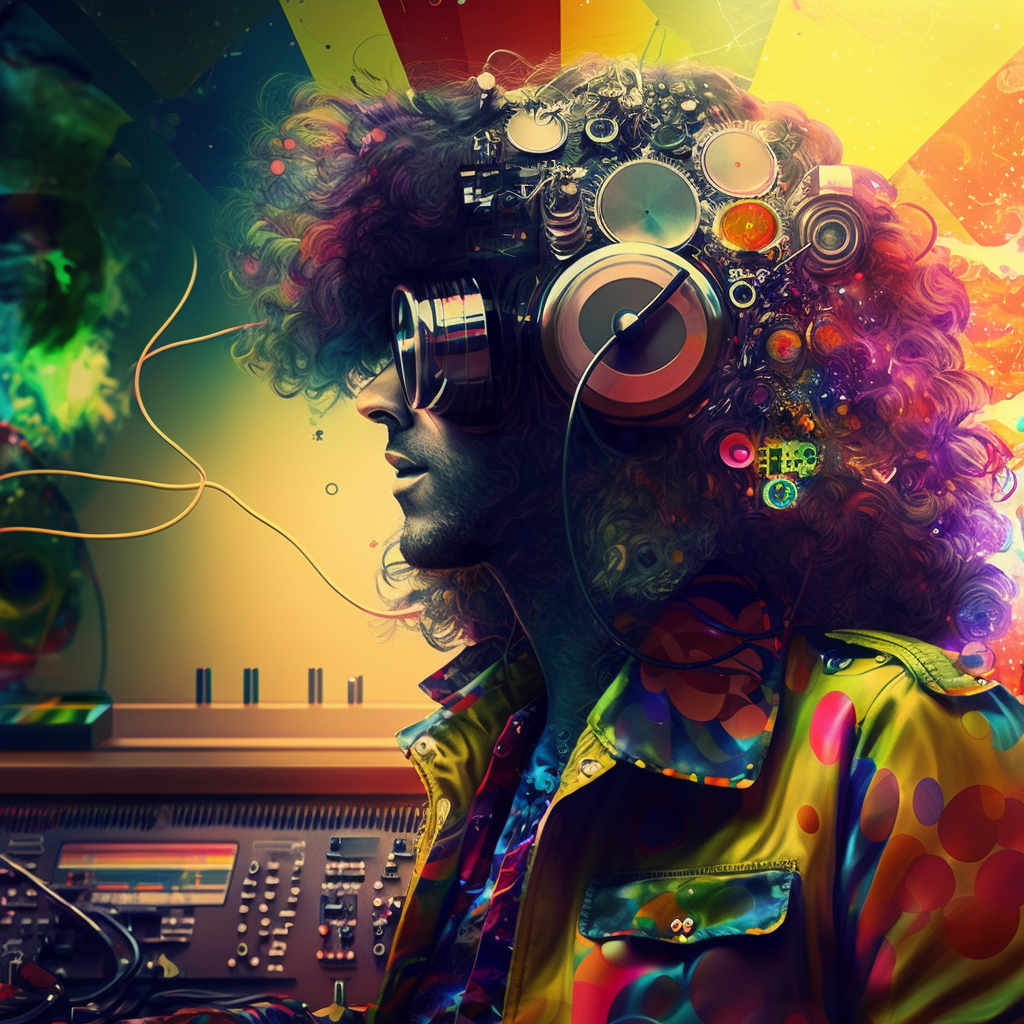
Modern Days Psychedelica
Psychedelic rock may have peaked in the 1960s and 70s, but the genre has seen a resurgence in recent years, with many modern bands and artists incorporating elements of psychedelic music into their sound. This revival of psychedelic rock has been dubbed “modern-day psychedelia” or “neo-psychedelia.”
Many modern-day psychedelic bands draw inspiration from the classic psychedelic rock bands of the 60s and 70s, but they also incorporate elements of other genres, such as indie rock, shoegaze, and electronic music, to create a unique and modern sound.
One of the most notable modern-day psychedelic bands is Tame Impala, a solo project of Australian musician Kevin Parker. Tame Impala’s music is heavily influenced by the psychedelic sounds of the 60s and 70s, but also incorporates elements of electronic music and funk. The band has achieved widespread critical and commercial success with albums like “Lonerism” and “Currents.”
Other notable modern-day psychedelic bands include King Gizzard & The Lizard Wizard, a prolific Australian band that incorporates elements of garage rock, progressive rock, and jazz into their psychedelic sound, and Unknown Mortal Orchestra, a New Zealand-based band that draws on psychedelic rock, funk, and soul to create a unique sound.
In addition to these bands, there are many other modern-day psychedelic artists and bands that are pushing the boundaries of the genre, including Pond, The Flaming Lips, and MGMT.
Modern-day psychedelia is a vibrant and diverse genre that is characterized by its incorporation of classic psychedelic sounds with other genres, resulting in a sound that is both familiar and fresh. With a new generation of bands and artists continuing to push the boundaries of the genre, the future of psychedelic rock looks bright.
Categorised in: Psychedelic

